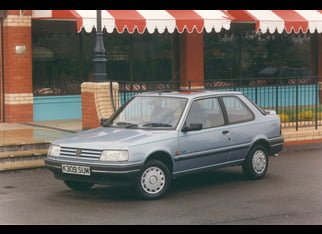Knowing a car’s age is essential for various reasons. It could be for
insurance purposes or to understand a car’s value when buying and selling. It’s also helpful for maintenance schedules and keeping up with the latest regulations. In the UK, there are several ways you can tell how old a vehicle is.
The easiest way would be through the car’s number plate. However, if the car has a private or dateless number plate or the owner doesn’t understand the format, checking the Vehicle Identification Number (VIN) would be the next best option. For the most accurate age identifier, car owners can trust the vehicle logbook or the V5C.
The Number Plate
In the UK, vehicle registrations have followed the millennium registrations format since 2001. All
number plates start with two letters, include two numbers, and end with another three letters. The first two letters are regional codes, meaning they point to where the vehicle was registered. The
DVLA randomly generates the last three letters. We can look at the two numbers in the middle to determine the age of a car.
For example,
cars registered between March and August 2020 will show “20” as their age identifier on the number plate. Any vehicles registered between March and August 2002 will display “02,” and so on. However, this format doesn’t apply to cars with private or dateless number plates. Dateless number plates are older than 2001 and don’t have an age identifier. In this case, car owners can use other methods to determine the car’s age.
VIN
A VIN is a
unique 17-character code that identifies a vehicle and its history. Every car in the UK is assigned a VIN, so you can use it to find out about maintenance records, recalls, and previous owners. You can use a VIN to check the age of a car by looking at the 10th character in the code.
The VIN code guide starts with “A,” used for 1980s models, and ends with “Y,” used in the 2000s. “1” is used for cars manufactured in 2001, “2” for 2002, and so on. VINs are usually placed on the car’s dashboard, driver’s side door pillar, or visible from the engine.
V5C
The Vehicle Log Book, or V5C, is a document issued by the DVLA. It contains essential information about the car and its owner. The V5C includes the current owner’s name, chassis number, engine number, registration plate details, etc. It’s the most accurate source for determining the age of a car.
Car owners can get a V5C from the DVLA if they have the necessary documents, such as a valid ID and proof of ownership. The V5C is important for car owners who want to transfer ownership or change their registration. It is also an essential document for registering a vehicle in a different UK country.
Conclusion
There are also online services that allow you to check the age of a car by entering its licence plate. Organisations like the
HPI and DVLA also provide a service that helps you determine the age of your vehicle. As for number plates, you can trust
Show Plates World.
Number plates are the first way to tell the age of a vehicle. It’s what you’ll see most often, so you must ensure it’s up-to-date and legal. My Reg makes high-quality number plates in the UK that guarantee customer satisfaction. We follow the BS AU 145e regulations, ensuring that you only drive with legal number plates. Besides the superior quality, we also prioritise accurate age identifiers.



